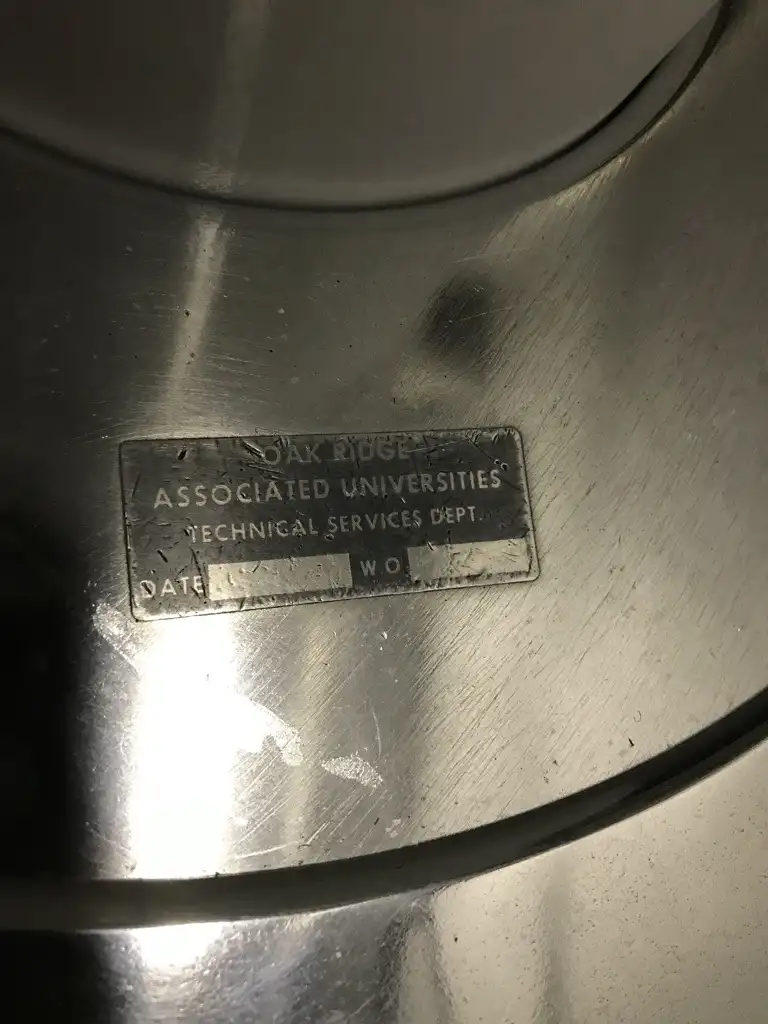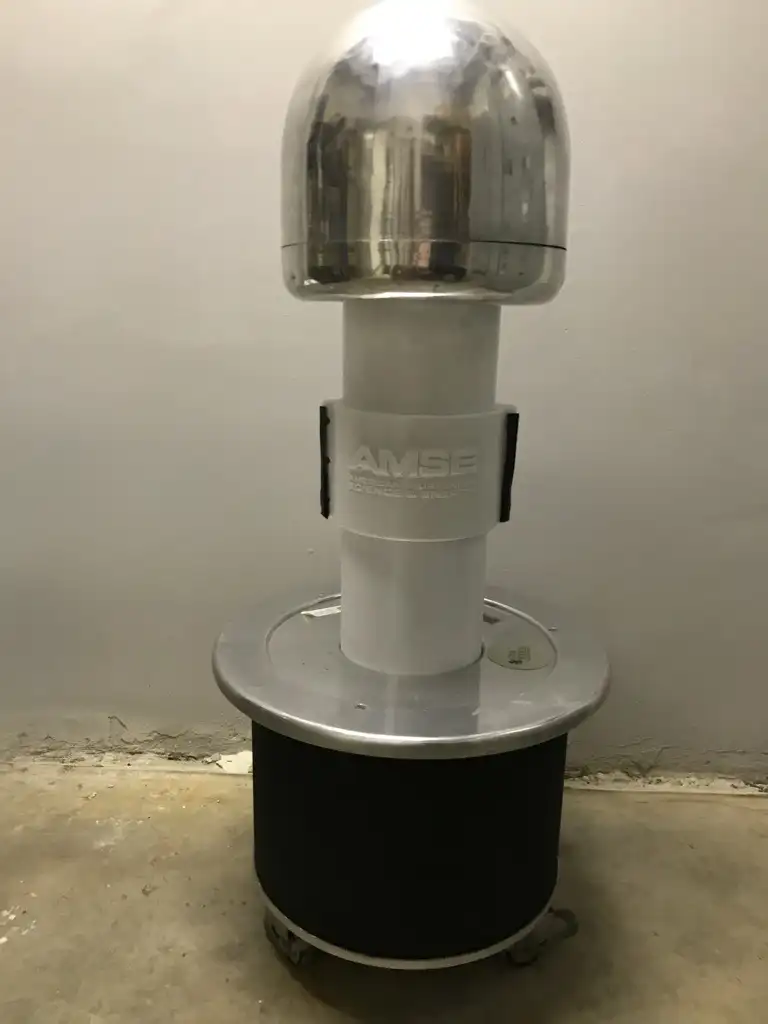My dad recently took my sons to visit the American Museum of Science and Energy (AMSE) in Oak Ridge, Tenn. It’s the oldest museum of science and energy in the nation. He used to take me when I was a little girl, too. Like my favorite memories from those trips, my boys came home chattering about static electricity and their hair standing up straight on top of their heads. They, of course, had gotten to touch a Van de Graaff generator.
The last time I visited AMSE, I discovered that the fan-favorite exhibit has a connection to ORAU: the ORAU Technical Services Department built and donated that generator to the museum decades ago. I thought it was a delightful revelation, and I wanted to know more, so I did a little digging to share the hair-raising history with you.
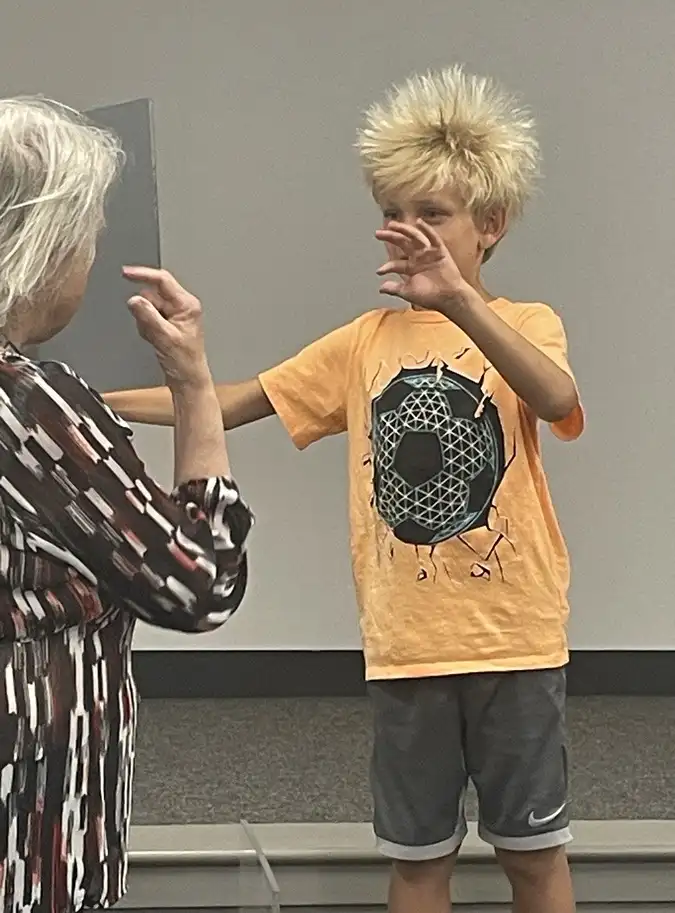
The American Museum of Science and Energy in Oak Ridge, Tenn., gives visitors the opportunity to find out what happens when they touch a Van de Graaff generator.
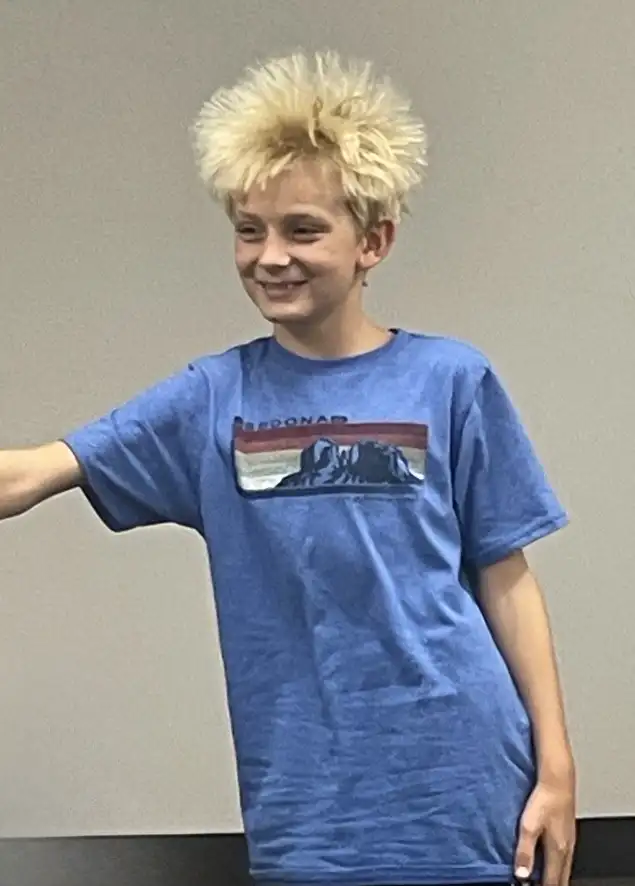
What is a Van de Graaff generator?
Let’s start with the basics: what is a Van de Graaff generator? It’s an electrostatic (static electricity) generator that uses an internal moving belt to accumulate electric charge on a hollow metal dome atop an insulated column. American physicist Robert Van de Graaff invented this machine in 1929, as a particle accelerator for research. These generators produce high voltage, direct current electricity at low current levels. Its high potential can be used to accelerate subatomic particles to great speeds in an evacuated tube. Van de Graaff generators are still used today as accelerators to generate particle and X-ray beams for nuclear research and nuclear medicine. Some of these machines are displayed in science museums because of the safe, educational value of demonstrations
Watch the video below explaining how it works!
When you stand on an insulated surface, put your hand on the sphere of a generator and then turn it on, the charge will transfer to you. The low current makes this safe. The electrons spread out onto your body as they repel from other electrons. (Remember, opposite particles attract and like particles repel.) This is most obvious in your hair because the like charges of the electrons repel each other and cause your hair to stand up and spread away. (The same things happens when you take off a sweater or rub a balloon against your head—static electricity!) This works best with clean, dry hair. I can attest that, yes, the demonstration works on adult hair, too.
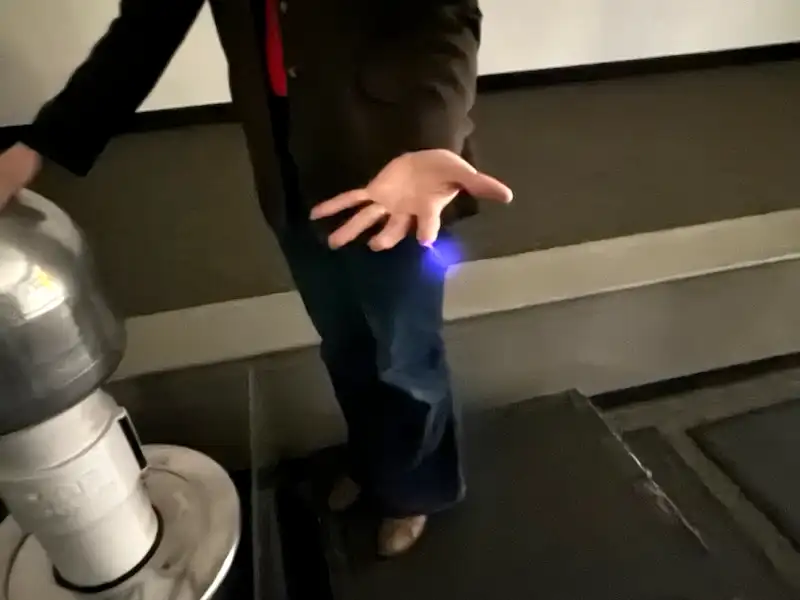
AMSE Visitors may even see static electricity on their fingertips when they participate in the Van de Graaff demonstration.
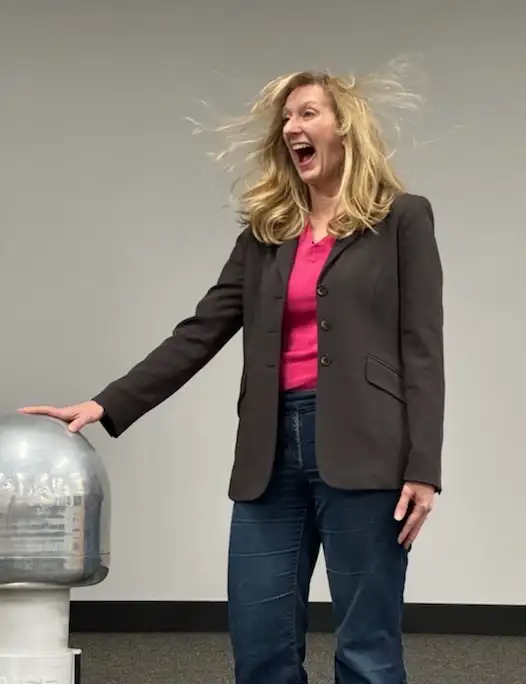
Why did ORAU build one?
So, why did ORAU build a machine for the American Museum of Science and Energy? ORAU built dozens of these generators, actually. Originally, it was not intended for a museum, but rather it was part of the Atoms for Peace program created by the Dwight Eisenhower administration in 1953. President Eisenhower gave a speech that is now considered the tipping point for an international focus on peaceful uses of atomic energy during the early stages of the Cold War. ORAU’s involvement in the Atoms for Peace program is rooted in its foundational mission of facilitating collaboration among academic institutions, government agencies and private industry in nuclear research and education. Because ORAU was heavily involved in Atoms for Peace—nuclear training and education, research and development, international collaboration, and health physics/radiation safety—building Van de Graaff generators for these purposes was a natural extension of its objectives.
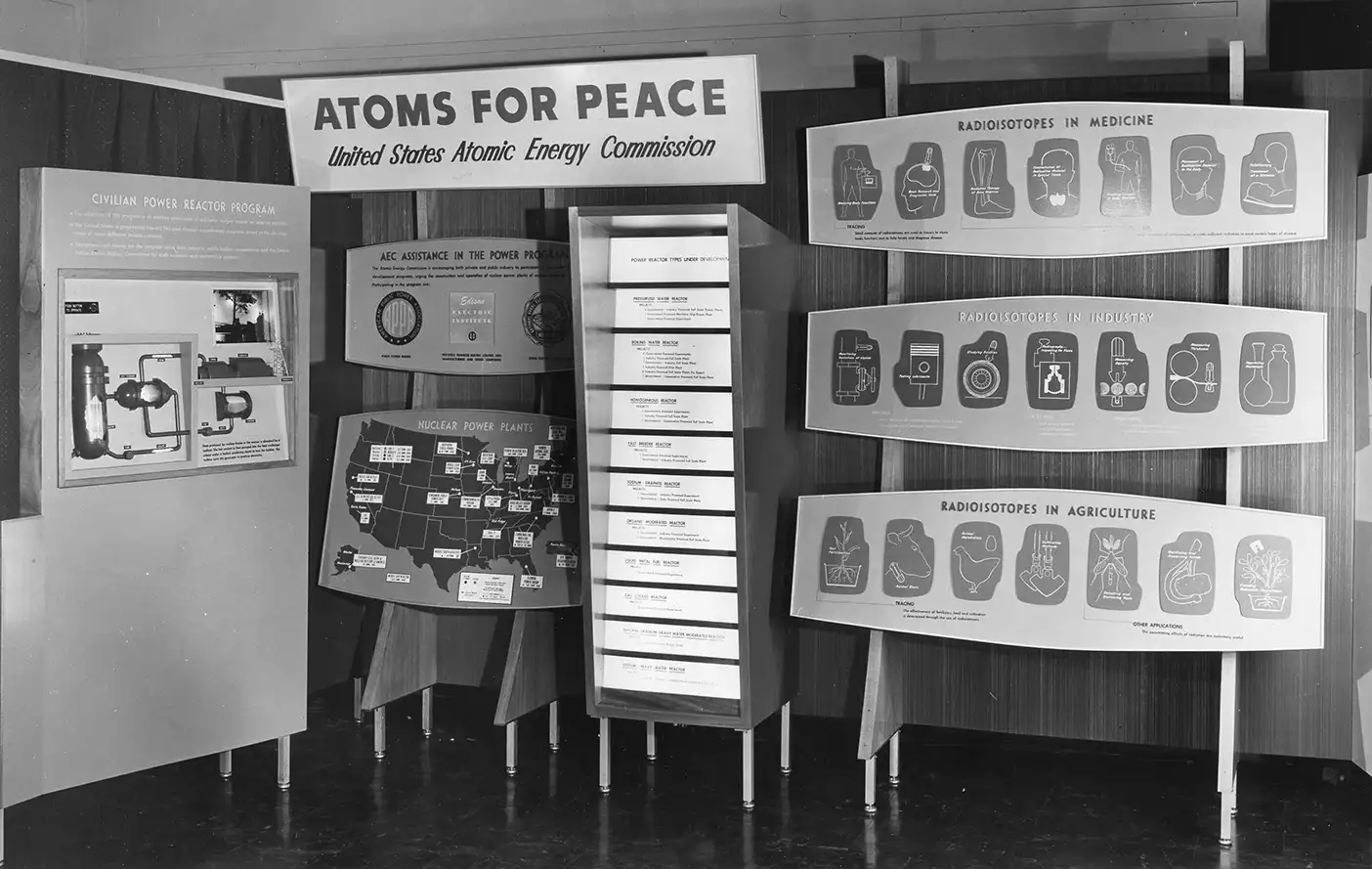
To educate the public about the potential good of this field of science, Van de Graaff generators were sent across the country as part of the Atoms for Peace program that visited schools, fairs and public events.
How did AMSE end up with a Van de Graaff generator?
The next question you may be wondering is how did AMSE become the proud owner of this machine? The museum was originally established for and operated by the Atomic Energy Commission (the predecessor to the U.S. Department of Energy). Its founding, like the Atoms for Peace program, was part of an effort to educate the public about nuclear energy and its peaceful applications as well as the history of Oak Ridge during the Manhattan Project. The museum’s original name was the American Museum of Atomic Energy, and ORAU (first called Oak Ridge Institute of Nuclear Studies, or ORINS) managed it for the Atomic Energy Commission.
As Atoms for Peace wrapped up, the Van de Graaff generators were given to museums and organizations that would carry on the education. Thanks to the close association between ORAU, the government, and the Oak Ridge community, it only made sense that AMSE would receive generators for its exhibits.
AMSE has two Van de Graaff generators for demonstrations and one shell. Only one of the operating machines has the ORAU plaque. In the last few years, both units have been refurbished by Oak Ridge National Laboratory with 3-D printed housing.
Next time you visit, look for an opportunity to participate in the Van de Graaff demonstration, and see if you can spot the ORAU tag!
Look for the ORAU tag on one of the Van de Graaff generators at AMSE.